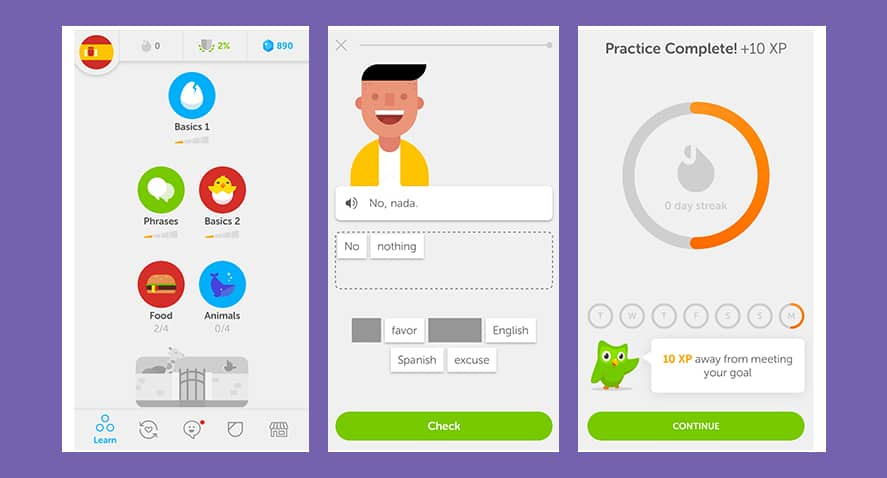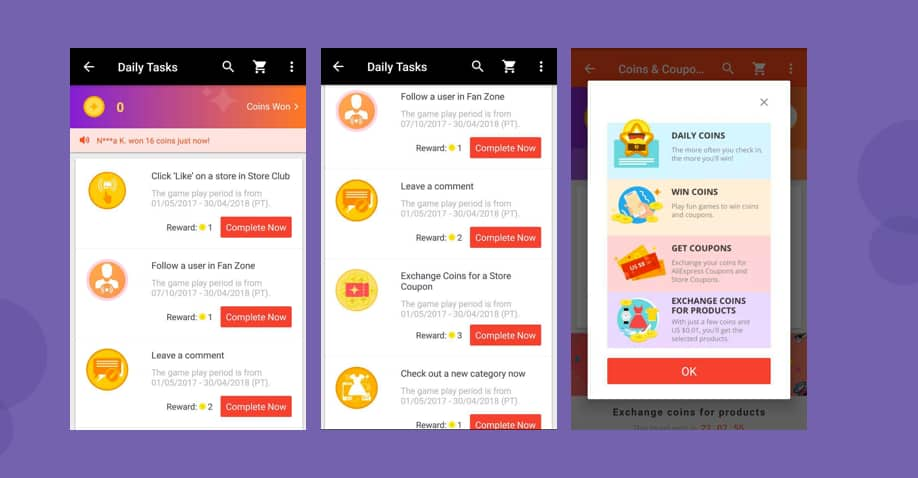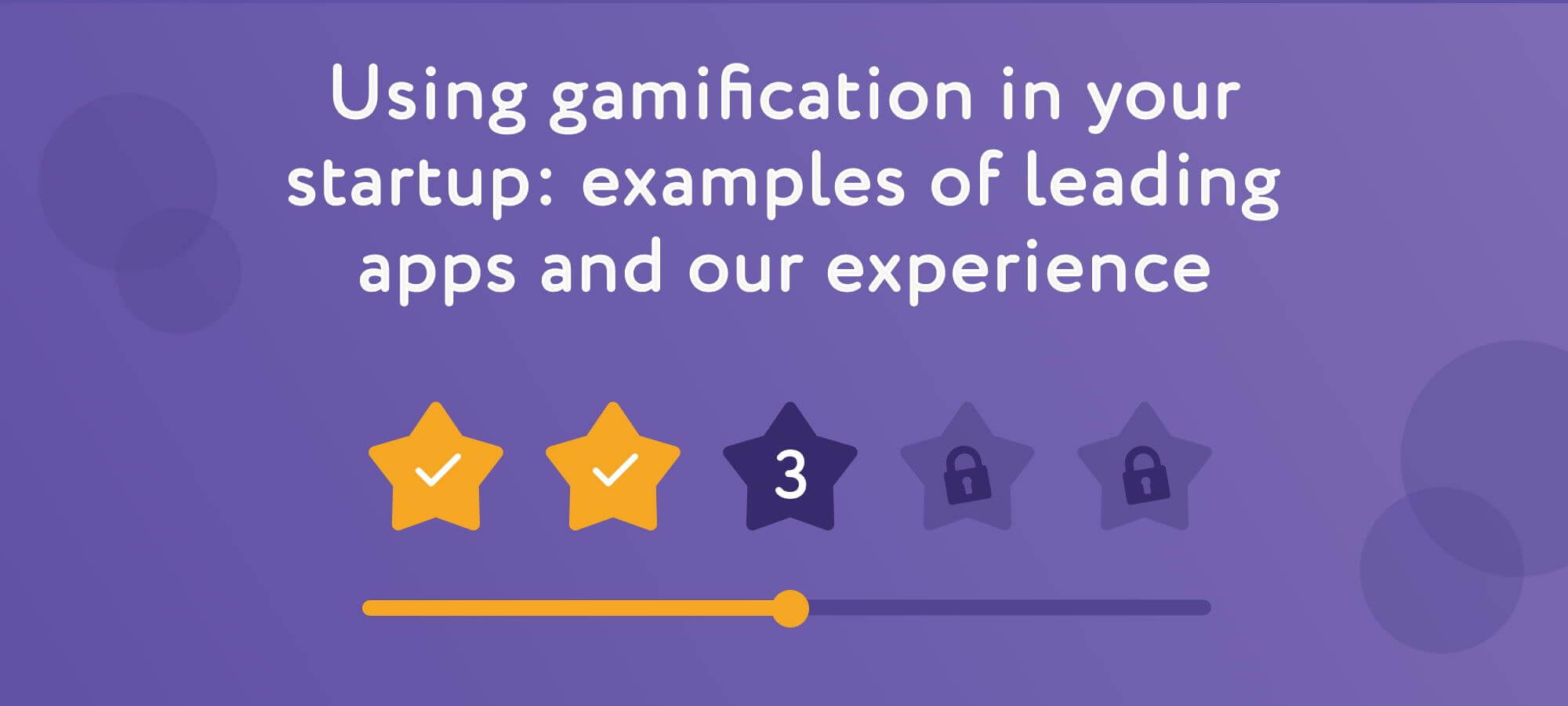Short description of the article
Intro
Gamification as a popular trend
Gamification tactics used by the world-known apps
Our best startup experiences
Conclusion
Intro
Nowadays the product owners want to make an app which defeats competition. Moreover, it should be implemented the newest trends, for instance like gamification.
In this article, you’ll learn how gamification helped world-famous apps to come on the top, what gamifying elements were included to successful apps developed by our company and why too much gamification is not always a good thing.
Gamification as a popular trend
Gamification is the application of game design elements and game principles in non-game contexts. Nowadays, gamification became the part of our daily life. It is being used everywhere: business, education, daily life and much more because it helps to make the process interesting and fascinating.
And what about statistic? According to it, gamification popularity is growing. And that is just the simple truth of it.
Look at the value of the gamification market:

Gamification has several aspects:
Dynamics - involving user attention and response in real time.
Mechanic- using scenario that looks like gameplay: scoring system, achievements, progress tracking, ratings, rewards, in-app currency etc.
Social interaction - user interaction typical for games, e.g. competition among users.
Aesthetics - creating the general game impression which influences the user engagement.
Sometimes creating an app the product owner doesn’t engage users with gamification and risks not to defeat the competition among many other apps in the global market. With no gamification elements the app looks pale and the users may get bored. On the other hand, it’s not necessary to use all of the gamification aspects in every kind of apps. Depending on the purpose of your app you may pick one or several gamification components.
As you can see gamification elements are worth adding to your app, moreover, the famous brand incorporated the concept of gamification into their apps that affected their reputation and influence the market demand.
Gamification tactics used by the world-known apps
Look at the world-known apps and learn how gamification contributed to their development. We are going to analyze an e-learning app Duolingo, a ride-hailing service Uber and an e-commerce website Aliexpress. Every one of them used gamification in its own way but without the chosen features they wouldn’t reach their popularity.
Gamification in the learning app Duolingo

Duolingo is a language-learning platform which includes a language-learning website and an app, as well as a digital language proficiency assessment exam. It created such an interesting learning process that even its beta version accumulated a waiting list of more than 300,000 users.
Want to know why?
Learning a language feels like playing a game because this app offers a lot of gamification elements. The beginning users go through a simple funny test and start earning XP (experience points). The users can’t access all the features at the beginning: they need to gather skills.
Also read our article: Mobile Application Development: Top 9 Steps to Build your Startup.
Besides, Duolingo offers you to create a club and interact with other users. Peer pressure is a motivating element that’s why you can see leaders on the leaderboards and compete against your friends. Another gamification feature is badges users get for their achievements and completing objectives and challenges.
And what about social interaction? Duolingo gives you an opportunity to share your experience and achievements with friends.
The design of the app makes the users forget about boring learning. Every detail gives you the impression that you are doing it just for fun. Colors are bright and cheerful. Each word is both written and provided with an image with bright colors.
The students acquire in-app currency called "lingots". With their help, users can open additional levels or customize characters.
Altogether it is something that creates massive excitement in the game. Users don’t understand they are learning, they feel they are having fun. Duolingo has become one of the most popular learning apps in the world because it benefited from gamification and used all its aspects. As a result, the app is loved and being used by more than 300,000 users in the whole world.
How is Uber using gamification?

With regard to the ride-hailing service Uber, it’s a fully different app taking the different niche but they use gamification elements, as well. Trying to make the service work quickly Uber does everything to engage and motivate drivers. Have a look at the gaming elements of Uber: as a reward, the drivers earn badges named “Entertaining Drive”, “Great Conversation” etc. The last studies proved that such badges are often just as motivating as cash rewards.
Another motivating element is called “forward dispatch”. The drivers get a new job before the previous one has finished. This trick has an addictive effect because drivers start taking one job after the other one without a break. Because of this unexpected effect, later, Uber had to add a reminder that drivers should have a rest.
In addition, Uber offers such motivating quests as completing several rides in a certain number of hours to earn a bonus of $X. If the drivers try to log out they get a message how close they are to completing a quest. There arose some disputes whether such tricks belong to manipulations, and we can’t give an answer to this question but we can ascertain the fact: Uber has achieved the dizzy success and has become a leader in its niche very quickly.
Examples of gamification in Aliexpress

Of course, the concept of gamification has come to e-commerce. Many retail companies use gamification in their apps to increase sales and AliExpress is no different.
Aliexpress offers many different kinds of games and tasks. How does the marketplace benefit from these games? Users play the games and experience positive emotions that leads to repeated use of this app. Besides, they can exchange the coins for coupons and it motivates them to make purchases. Additionally, Aliexpress promotes its new product categories offering the users to check the new category. There are several types of games but the general goal of the marketplace is that between the games users are reminded of the marketplace as non-intrusive as possible.
As you can see, the top platforms and apps use all possible gamification aspects. Let’s move on to our experience as we have worked with many startups which are now successful because of gamification use, as well.
Our best startup experiences
Almost every app or platform we developed had features of gamification of one form or another. Every business owner wants to make it big and of course, he should use all possible ways and trends for it. But working at the app development be careful with gamification: there are apps which should use all possible gamification features - the users will see such apps as entertainment apps (even if they are for educational purpose) and there are platforms or apps which take only a few gamification features (for example business apps) because creating the structure of video games would be generally inappropriate. Developing our apps we used all popular concepts of gamification. Let me tell you about a lifestyle app and an educational platform developed by our company.
Educational platform

Maybe you look at the example of Duolingo and think the more gamification in the learning app the better. But everything depends on the goals and impression you want to provide with your app/platform. We developed an educational platform which positions itself as a serious sketching platform in the global market. After finishing its courses the students would find well-paid jobs.
Too much gamification would look like a kindergarten class and without gamification the learning process usually becomes boring. In this case, it has been decided not to bring too much of gamification because its features should motivate and engage students and not distract them.
Read our article: How to Develop an E-learning Platform: Steps, Challenges and Solutions.
As the platform creates an image of prestigious courses, the design is serious and laconic and gamification features are a humble addition to the general design. There is an in-app currency (credits) and XP points (experience); gathering XPs the students open new levels, and it motivates them to the future achievements. There are levels and you come to the new one only having passed the previous one. Students can see their progress line, their strengths and weaknesses.
Do you remember that social interaction is one of gamification features? The platform uses it, as well: the students are pleased to share achievements with friends and tell they attend prestigious courses and have certain achievements! Additionally, the platform benefits from being advertised by its users to their friends. All together it presents the educational platform as providing a serious and promising education but in an interesting way. Would you like to get more detailed information on this project? Leave your contact info and mark “educational platform” in the message and we will send the detailed info on this case to your e-mail.
Lifestyle app

Another app our company has developed is a lifestyle app. Our purpose was to develop an app which connects people offering services and people who need such services. If somebody needs a teacher/nurse/plumber/electrician/cleaner etc., he or she searches in the relevant category. This app isn’t designed for entertainment and gamification shouldn’t distract the users from the main goal: hiring personnel or finding a job. But it shouldn’t be banal and should stand out among other similar apps in its niche. The gamification mission is both clients and workers should be willing to use the app. So, what gamification system was developed there?
Everybody knows how boring a job search could be. So, this app tried to diversify this process. Workers are motivated to do their best because they get likes from satisfied clients, and workers with the best ratings come on top of the list. Additionally, workers get in-app badges and scores what tends to be not less motivating than a cash payment. Moreover, the app pushes the workers to improve their skills that’s why there are different levels from the beginner to the professional. But this process doesn’t look very dryly. In contrast, the workers get stars and scores and can customize their profiles coming to the new level.
The client gets points when ordering service and after having gathered many points he can get a discount, pay for the next service order with these points or get a cashback. Clients get a reminder of how close they are to getting a discount or a certain cashback. The design is rather laconic because the gamification is a supplement only and doesn't distract from the main purpose: searching for a job or hiring personnel. Such a gamification strategy has already paid off because this app has become very popular in its country.
Conclusion
Gamification is a new and popular trend. It should be used in the app or platform for fostering competitiveness because without the gamification elements the app tends might be boring and dull. As it has already been established that gamification enhances user engagement we advise to pick certain features of it and use them in your app.
Nevertheless, use it wisely because not all the gamification aspects have to be placed in every type of apps. Depending on its goal the app or the platform serves for entertainment or for serious purposes. If the goal is not only entertainment be carefully and don’t bring too much of gamification elements: they may become a distracting and annoying thing. The lifestyle app and educational platform developed by us have become popular and successful.
Remember the main goal: gamifying should engage users and push them to the continuous use of an app. Its features should look appropriate in a certain startup. Want to develop and gamify your app? Feel free to contact our team.





